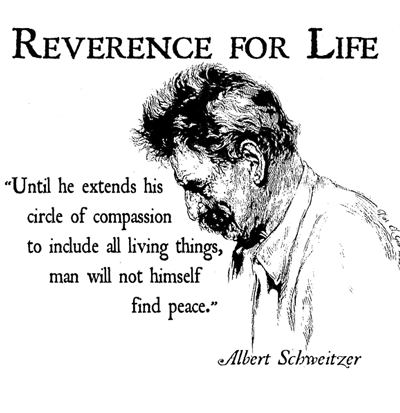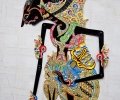Chicken for Doctor
“Reduce suffering, prolong life” is the moral guide for medical doctors. Most doctors still follow this guide, and we expect most of the patients will be very grateful after receiving this compassionate deed. Unfortunately, they are not the majority. What we often hear or read is many patients complain of being overcharged for the service; the popular joke is “her body is sick when entering the hospital; her pocket is sick when leaving the hospital.”
Compensation for medical service is not included in the Hippocratic oath. Therefore, doctors do not break any oath or law to charge their “dear” patients dearly. But to me it is not right to make so much money from sick people; they have suffered enough from their illness. I have followed this moral guide and the path of Albert Schweitzer in my medical career: helping patients, especially the poor, with my heart, in addition with my brain.
One of various factors that might cause the low number of passionate doctor, I suspect, is the feudalistic medical education. The feudalism in medical training is universal: the specialists “step” on the heads of the residents, who in turn “step” on the head of interns. Every doctor has to experience this oppression for 2 to 8 years, depending on the qualification they are pursuing. Their passion—if any at the start of internship—will likely have disappeared by the time they graduate from the medical school.
My capacity to withstand the ruthless internship was much lower than most of my classmates’ because I also endured racism from the professors, seniors, and classmates. Above all, I had never wanted to become a doctor. Skipping internship at some departments and travelling around Indonesia with my American friends was my escape—like the Green School students “going to Dr. Ating” 25 years later—doubling my internship period from two to four years. This time I travelled to Flores Island by myself.
Famous for its komodo dragons, Flores Island itself actually has no Komodo; the dragons live on smaller islands of Rinca and Komodo, east of Flores. However, Flores has Kelimutu, the famous colorful crater lakes. To get there, I had to fly to Ende and then continue by public transport to Moni village. In 1988, this short trip was a journey.
Passengers of the car were packed like sardines in a can; old cars normally could only take 12 people, but no car would leave the terminal if the passengers were less than 15. All the way to Kelimutu, the car rattled like the moving door with rusted hinge. The road “matched” with the car: full of holes after leaving Ende downtown. The car ran zigzag like driven by a drunken driver. If we met a vehicle from the opposite direction, both cars had to move aside along the edges of the road; the risk was the car either bumping against the rocky wall at one side, or worse, rolling into the dell at the other side.
People might imagine that the drivers would drive very slowly on this route. They did not. The Florenese public drivers were, and are, nuts. They are reluctant to lift their foot off the gas pedal even at sharp curves. I saw many passengers keep making cross sign on their chests—Flores is the main exporter of Fathers in the world now—and saying prayer with a rosary in their hands. God must have told Saint Peter to let all Florenese drivers pass the Heaven gate when they die, but to scrutiny the Florenese priests for their tangible good deed they had done during their priesthood.
Kelimutu is only about 60 kilometer from Ende; crazy drivers were supposed to take this distance less than two hours. It did not happen. In addition to slowing ant-like kiss between the opposing cars, we had to stop for hours at some points along the road. The eroded road from landslides on one side or the wall slide of the other side piling the road was the frequent cause of halt, followed by broken or misplaced bridge due to the changed path of the river course.
Landslides and broken bridges did not stop our journey. Every car brought a piece of log, about 90 – 120 cm long. At each landslide spot, cars stopped until enough logs to build an emergency bridge. When all log contributing cars had crossed it, the bridge was disassembled. By this way, we spent around 60 – 90 minutes for each spot—better than waiting for the Government to fix them, months.
All but one of landslides were natural events. A child was hit fatally by a car and the car ran away. To get revenge, the villagers dug a half width of the road; that really slowed down all cars for hours. One person was guilty, hundreds to thousands people suffered. How could punishing innocent people make the grief-stricken family feel better? Probably the nature of human beings: feeling less miserable if they see the others are in misery too.
I arrived in Moni late in the afternoon; Moni was the village where the climb of Kelimutu starts. I visited this place two years before; therefore, the nuns in the clinic had known me and were very happy to see me again, especially when I told them I was going to help them. There had not been any doctor stationed there. The closest doctor was stationed in the Government Health Center, Puskesmas, in Wolowaru (12 km) and the Mission Hospital in Jopu (17 km).
The nuns were very kind. They let me use one room in the clinic for sleeping; the other room was for inpatients. I could watch moving fogs on the mountain in the misty morning and afternoon through my room window. In the beginning, the nuns looked anxious about my meal; they were afraid I could not eat their simple meals. On the other hand, they could not serve me meat every day because it was expensive. They asked me what I would like to eat, and I took them to their yard garden and pointed the vegetables plants. I brought a pack of shrimp paste for sambal (chili sauce); any vegetables would be delicious with sambal. Living with the nuns of CIJ congregation in Moni was the first of so many close contacts with nuns. They are always very kind to me: free accommodation, free meal, and a lot of attention, which I lacked of.
The clinic opened from 7:30 am to 1:00 pm, but it provided a 24-hour emergency service. I took care of all patients. If the sickness was severe, they would stay in the clinic for a few days. My first severe patient was a 3-year old boy with high fever and difficulty with feeding. He had been in the clinic for two days and I had given him chloramphenicol because I suspected he suffered from typhoid fever, the most common cause of high fever. He did not look better on day 3; instead he then developed pneumonia. I gave him penicillin injection and he was better afterward but only for a short time; the fever became continuously high and his consciousness down. My diagnosis might have not been correct.
I asked Sister Hermina, the clinic Sister, about the most common causes of fever in Moni. She mentioned malaria was one of them. I had not thought about it because Moni is in the mountain. According to textbooks, malaria is the disease of tropical lowland. After reading the malaria section in the Oxford Medical Textbook—as thick as a pillow—I gave the boy chloroquine crushed tablet anyway. He recovered quickly and I discharged him on day 6. I missed the diagnosis because I had never seen a malaria patient and I did not have the epidemiological data of malaria in Indonesia—no Google then. The lesson was I have to learn from the local health workers about the local diseases in any new place.
The following morning, his father came back. I thought the boy’s condition were worse at home. It turned out he just wanted to give some bunches of big ripe bananas for me. “For Doctor,” he said to Sr. Hermina. He had paid the clinic for his son, but he wanted to give me something for saving the boy—although I had made a wrong diagnosis in the beginning. These bananas are very significant in my life; they boosted my strength to finish medical school. For the first time in my life, I felt that feeling, the good feeling for being able to save the poor, the nirvana of looking at the grateful eyes of the patients or their families.
Moni is the foot of mount Kelimutu. It is cool and beautiful, surrounded by waterfalls. One Sunday, Sister Emmy and Hermina woke me around three o’clock. We were going to Kelimutu lakes. It took us three hours to reach the top of Kelimutu Mountain. We were a bit late for the sunrise, but the view was still memorable. The lakes were partially covered by the mist. One lake had red-brownish water; the other two—twins, separated by a thin limestone wall—green and blue. These colors were brilliant. I was in solitude and peace; I wished I had had a cabin there—a desire, watch out! The peace was gone a few years later; the government built a road to the top; everybody could visit Kelimutu effortlessly; air and noise pollutions and plastic thrash spoilt the beauty of the lakes.
Every afternoon I went for a walk and took a bath in a hot spring. It is only about 30-minute walk up, passing some villages. At the second week, everybody around Moni knew me. One afternoon, a woman stopped me on returning from the hot spring. “For you, Doctor.” It was a roaster. “I will come to the clinic tomorrow morning.” I was stunned, but I accepted the roaster; it is impolite to turn down the offer. At the convent, I gave the chicken to Sr. Emmy but I could not tell her the woman’s name. The next morning the chicken woman showed up. I asked Sr. Hermina not to charge her. The price of a roaster was about the cost of four visits. For the whole month, I collected two chickens, one ducks, and ten eggs.
Moni had no electricity; I read books under the kerosene lantern light in the evening. However, it was too cold outside the bed and too many mosquitos. Except for those inconvenience, Moni was a perfect place to work and live for me. I could do many things here. For example, some poor widows at the convent of Jopu earned a living by knitting kain ikat, the famous weaving cloth from Flores and some other islands in East Nusa Tenggara. Foreigners love them, and there were always international tourists in Moni, but the Sisters did not sell kain ikat to them directly. They were not comfortable because they could not speak English. With the intention to sell them to the tourists, I took some of their kain ikat, but could only sell one. I was too embarrassed to offer them to the tourists. In the last day, I bought them all by myself.
Another patient I remember very well is also a boy, six. He was brought to the clinic in lethargic condition. Having done the physical examination and taken the history of his illness, I suspected he had bowel perforation from a complicated typhoid fever. The case was beyond my ability to handle: he needed laparotomy (abdomen operation) and third generation cephalosporin per injection, which was not available. I asked the parents to take him to the general hospital in Ende. They said they would discuss first with the senior members of the family. However, instead of going back home by themselves, the parents insisted on taking home the boy with them. “They will take him to the dukun,” Sr. Hermina told me. Dukun is a traditional healer.
I was curious about their life condition and decided to come along. Their village was not far the Kelimutu peak, but it took us 4 hours to get there due to the steep climb. Their house was just a small hut with soil floor and thatched roof. There was one wooden bed filled a half of the single room—the boy and the whole family, total 5, slept on that bed. The kitchen was outside, at the back of the house; I did not see any toilet or bathroom.
Some neighbors came and then we sat on the floor. I asked some questions to break the ice. Having a doctor in their house was an honor to the family; they might not be comfortable, or did not know how, to start conversation with me. As I was afraid of getting dark on the way home, I excused myself. They looked at each other until someone told me to wait for a few moments. Then I understood why there had been a screaming chicken at the back house a few minutes before. Chicken for Doctor, again, but this time cooked.
It is rude to turn down meal from the host in Indonesia, even if we come by without advanced notice. Being polite tortured me twice. First, I had to eat tasteless and rubber-like boiled chicken with semi-cooked rice—they had only salt. Second, I struggled to go back to Moni in the dark and slippery track. Before leaving, I gave the family some money for the transport to Ende.
A week later, I heard the boy died in Ende. They delayed taking him because they had to collect money from the community. I felt sorry for the boy and his family. Months later, in a letter, Sr. Hermina wrote that these villagers came to the clinic to build a house for me. They had heard I would come to work in Moni. Yes, I had intended to do so and almost bought a young little horse, my dreaming pet.
In the same letter, Sr. Hermina informed me that the Bishop of Ende would accept me as the Mission doctor in the Jopu Hospital and Moni Clinic. I felt bad. I wrote her back that I changed my mind: I chose Papua. Flores is beautiful but it is too small and too “soft” for me. Job without challenge is killing me.





